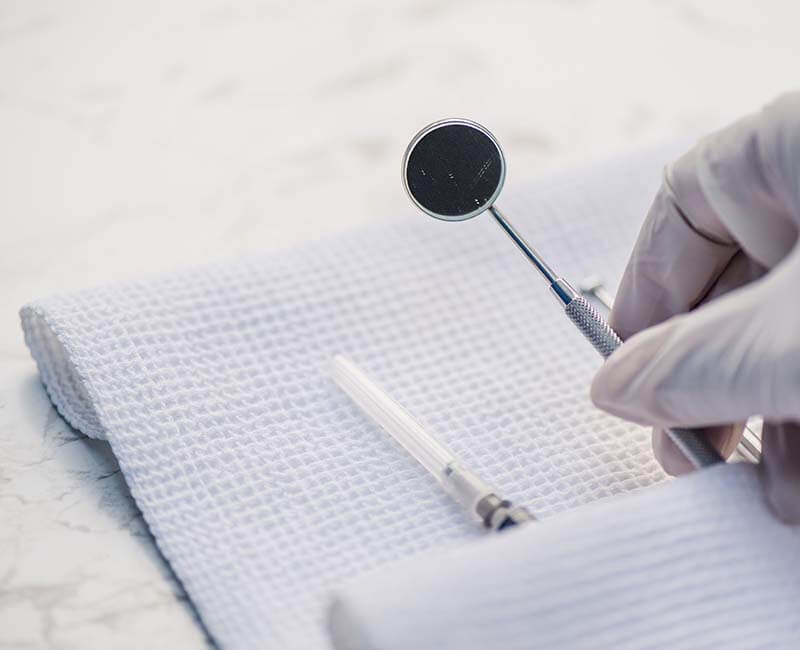What to know / What to do

Common Situations
Sometimes certain things can be done to temporarily relieve pain or discomfort.
Although these solutions may be effective, they are only temporary solutions and, like any other health problem, the patient should consult a professional as soon as possible.
Here is a list of dental emergencies seen most often and what can be done while waiting to see your dentist.
Problem
Temporary Solution
Dental decay (cavity)
Do not wait: Call us. Your decay can progress rapidly to reach the nerve (creation of an abscess). When decay starts to cause pain, it is often too late and it usually means that it has reached the nerve and the tooth will require a root canal.
Complete loss of a tooth as a result of trauma
Place the tooth in milk and call us as soon as possible. It is a very urgent because the prognosis decreases with time. If it’s been more than two hours since the loss of the tooth and its relocation, the chances that we can save the tooth are slim
Fracture of a tooth
When a tooth breaks without any trauma, it is often the case where the decay has progressed quietly without being seen. Make an appointment as soon as possible.
Lost or broken filling
For temporary relief, place a sugar free gum in the hole left by the loss of the filling. Contact us to take an appointment.
Ulcer
Rinse your mouth with salt water and call us for an appointment if the ulcer persists for more than 3 weeks.
Dental Abscess
An abscess is defined as a collection of localized pus. A dental abscess is clinically seen as a lump or swelling usually located on the gum in front of the problem tooth. An abscess can become very dangerous and requires immediate attention. Call us immediately.
Self Diagnosis
(see corresponding numbers on chart below)
Symptoms
Most Probable Cause
Tooth is sensitive to cold
1-2-3-12
Tooth is sensitive to heat
3-1
Tooth is sensitive to pressure
4-5-6-10-12
Pain when chewing or biting on tooth
12-4
Pain AFTER eating food
5-2
Gum is swollen
4-6
Sensitive red or white lesion on gum
11
Tooth is loose
7-8
Shooting pain that “comes and goes”
3
Gum is swollen around back tooth
9-6-4
Pressure type pain that worsens When you tilt your head downward
10
What Can I Do?
Number
Most Common Problems
Temporary Solution
Consequences if left neglected
1
Dental hypersensitivity
Try Sensodyne toothpaste Keep tooth away from hot & cold
A tooth that is chronically irritated may develop pulpitis and require a root canal.
2
Dental decay
Better to repair when it is small
Pulpitis leads to an endodontic abscess.
3
Pulpitis
Take anti-inflammatories (Advil, Aspirin). Rinse with very cold water.
Pulpitis leads to an endodontic abscess.
4
Endodontic abscess (tooth)
Rinse with salt water and take analgesics
Left untreated the infection may spread to the face and may even become life threatening.
5
Food impaction
Floss after every meal
Chronic food impaction will cause a localized periodontal problem. Must be fixed.
6
Gum abscess
Rinse with salt water
The infection may spread to the face.
7
Gum Disease
n/a
Untreated gum disease eventually leads to tooth mobility and even tooth loss.
8
Displaced Tooth
Don’t chew on the tooth. Requires fixation (splint teeth together)
Loss of tooth.
9
Pericoronitis Infection around Wisdom tooth
Rinse with salt water. Take anti-inflammatories (Advil, Aspirin)
Can become infected.
10
Sinusitis
Take over the counter sinus medication
11
Ulcer
Rinse with salt water
An ulcer which doesn’t disappear within 3 weeks can be cancerous.
12
Cracked tooth
Don’t chew on the tooth. May require a crown.
If the crack leads to the pulp, the tooth may require a root canal.
Trauma
Accidents and Special Situations
Results from a trauma to the mouth most often affect the front teeth (incisors). When a tooth is hit it will either break (fracture) or be dislodged (subluxation) or fall out (complete avulsion).
Even when a tooth has seemingly not moved or fractured, the long term consequences of a physical trauma to a tooth can be severe. A traumatized tooth will sometimes die (necrosis) and require a root canal.
In rare instances the body will react to a traumatized tooth by slowly dissintegrating it’s root. This is called external root resorption and will lead to loss of the tooth. Any accident involving trauma to the mouth and teeth requires a professional consultation and x-rays to determine the extent of the damage and the appropriate treatment.
1 – Fractured crown without pulp exposure
If sensitive, place orthodontic wax or sugarless gum to cover fracture. Get an appointment
2 – Fractured crown with pulp exposure
Get an appointment as quickly as possible. Left untreated, the pulp will become infected and cause an abscess
3 – Subluxation
Try not to touch or move it. It will require a fixation to keep it from moving. Make an appointment as quickly as possible
4 – Complete avulsion (loss)
If the entire tooth comes out (crown + root) Place it in milk or water and call as quickly as possible. The tooth must be reimplanted in less than 2 hours in order to save it.
Orthodontic Emergencies
Components of braces:
Fixed orthodontic appliances, commonly called “braces” are composed of various elements used to move teeth. The bracket is glued to the teeth and allows the orthodontic wire to straighten the teeth.
The wire is attached to the bracket with a tiny elastic called donut. Sometimes bands will be placed on the molar bracket rather than brackets to better resist the chewing forces.
